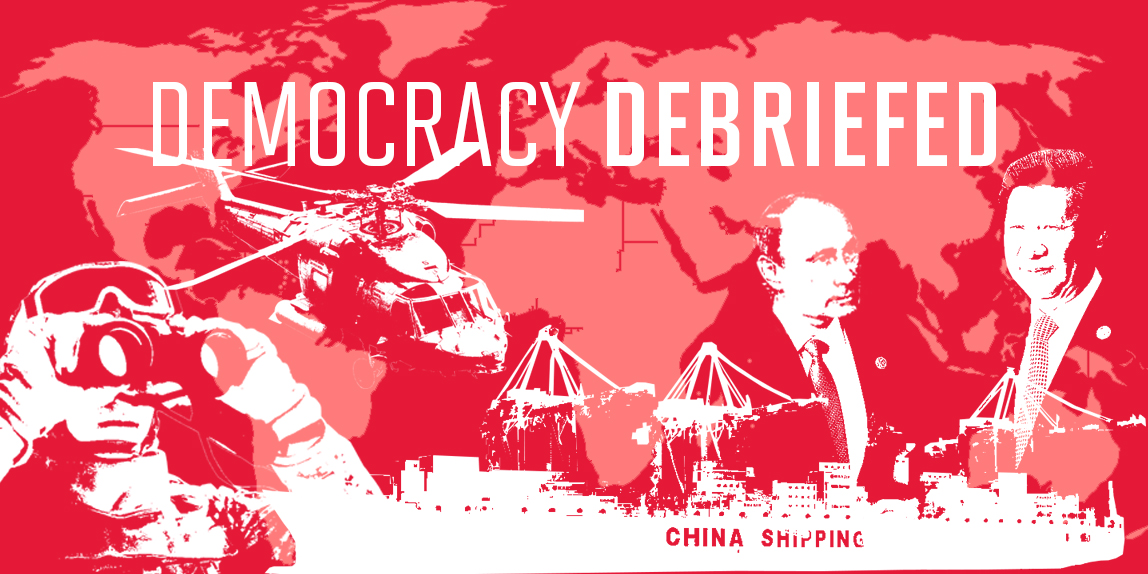Democracy Debriefed is a weekly interpretive column that explains complex foreign and domestic policy issues. The views expressed are the author’s own.
On March 19, Secretary of State Rex Tillerson concluded his trip to Asia by meeting with Chinese President Xi Jinping. Despite President Trump’s bombastic accusations toward China in the past, the meeting seemed to be overwhelmingly positive. Using phrases such as ‘win-win’ and ‘mutual respect’ — favorites of Chinese diplomats in regards to trade and security with the United States — Tillerson seemed to reassure Xi by emphasizing cooperation over competition. More optimistic U.S.-China relations could certainly be on the horizon, which would indeed be in the United States’ strategic interest, but if the Trump administration goes that route it should be aware of the possible losses. Most notably, in order to have good relations with China, the U.S. must recognize its self-proclaimed “core interests,” a concession the Obama administration had also been offered and subsequently rebuffed.
Since 2009, China has become more assertive in its near abroad. This renewed aggression is tied to a list of core interests Chinese leadership has espoused over the past decade. Key to these interests is the concept of respect for China’s territorial sovereignty. Normally, this is a given when two powers interact, but China’s definition of its sovereign territory is different than that of its neighbors. The outstanding issue of Taiwan, for instance, has been an ongoing holdup in U.S.-China diplomacy for half a century.
Taiwan split from the Chinese mainland in 1949, when the communist PRC government won a costly civil war and the nationalist KMT government fled to the island off China’s southern coast. Taiwan has been independent since then, but the PRC continues to claim that it belongs to the mainland. The U.S. has since been maintaining unofficial ties with Taiwan, selling arms and, as recently as 1996, sending two aircraft carrier battle groups to deter Chinese aggression in the Taiwan Strait. The U.S. government’s legal ties to Taiwan are reinforced through the Taiwan Relations Act of 1979, which makes abandoning the island particularly difficult.
The U.S. and China also vehemently disagree over the ownership of the South China Sea. Since 1947, the Chinese government has taken the stance that nearly all of the South China Sea is encompassed by China’s historical fishing waters, labeled the Nine-Dash Line. Within this border, which is quite literally nine dashes providing a vague demarcation of territory, lies several archipelagos of disputed islands by multiple claimants. Some claimants, such as the Philippines, have mutual defense treaties with the U.S., making their public quarrels with China hard for U.S. leadership to ignore.
During President Obama’s meetings with Chinese President Hu Jintao in 2009 and 2011, the U.S. also encountered a cordial China hoping to gain assurances that its core interests would be respected. Similar to the Trump administration’s preliminary meeting with Chinese leaders, the focus was on North Korea’s ongoing saber rattling and trade disputes. Eventually, however, President Obama informally rejected China’s core interests by continuing freedom of navigation patrols in the South China Sea and by bringing forth the Trans-Pacific Partnership.
The prospect of the TPP was anxiety-inducing for China for a number of reasons. First, the deal would create a 12-member trading bloc controlling 40 percent of the global economy without China’s membership. Second, the deal would have increased the U.S. clout in a region littered with China’s core interests. The Obama administration pushed the TPP as a part of its “Pivot to Asia,” aiming to secure U.S. economic growth by tapping into the massive consumer potential of Asia through reinforced commitments to allies in Asia and counterbalancing China.
Despite China’s amicable overtures early in the Obama administration, President Obama went forward with his Asian pivot and massive trade deal designed to surround China. This indicates that while the Obama administration realized economic interdependence with China was critical to U.S. economic growth and national security, formally recognizing China’s core interests was too risky. Doing so would mean ending arms sales to Taiwan, and possibly forfeiting Taiwan’s de facto sovereignty, as well as risking the freedom of navigating shipping lanes in the South China Sea. President Obama instead made the decision to counterbalance China strategically while maintaining economic interdependence. Trump may come to the same conclusion; however, Trump’s anti-free trade rhetoric and aversion to diplomacy with smaller countries may render many of the Obama administration’s political tools ineffective.
Trump’s campaign rhetoric was incredibly hostile to the TPP and NAFTA. Domestic politics aside, free trade deals like these are an incredibly important way to link countries and discourage hostilities by making it more costly to enter a hot war with a trade partner. Additionally, Trump has made it clear on a number of occasions that he isn’t fond of the U.S. providing military aid to allies in Asia.
Shunning smaller countries and traditional allies may be a smart move under a strategy to befriend a large power like China, but it doesn’t provide much latitude for adjustment if that route doesn’t work out. Instead, those smaller Asian nations may gravitate toward China for security partnerships, and those trade deals may be made with Chinese leaders at the helm instead. The key takeaway for Trump’s foreign policy teams remains clear: Don’t cozy up to China unless you’re willing to accept China’s demands.
Kyle Rempfer is a sophomore government & politics and Russian major. He can be reached at krempfer@terpmail.umd.edu.



